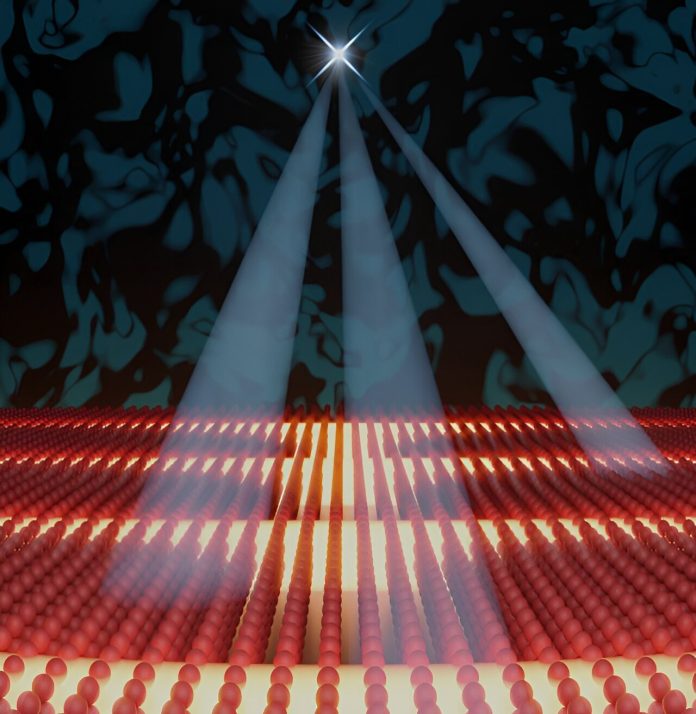
Scientists have made an exciting discovery: a new type of supercrystal that forms spontaneously in a material that can switch between being a metal and an insulator.
This breakthrough could lead to new ways to create materials and devices with adjustable electronic properties.
The research team, led by Cornell University, studied a thin-film Mott insulator called Ca2RuO4. Mott insulators are a special group of materials that can change from metal to insulator due to quantum effects.
The team found that at temperatures between -73°C and -23°C (200 to 250 Kelvin), the atomic structure of this material forms an organized pattern called a supercrystal.
This discovery was detailed in the journal Advanced Materials.
“This is a great example of complexity arising from simplicity,” said Oleg Gorobtsov, the study’s lead author and a postdoctoral fellow. “Usually, to create a supercrystal, you have to layer different materials on top of each other. Here, a relatively simple system shows a complex structure on its own.”
The discovery was made using an advanced analysis technique developed by Andrej Singer, an associate professor of materials science and engineering at Cornell, and the study’s senior author.
In 2023, Singer’s team showed that combining high-powered X-rays, phase-retrieval algorithms, and machine learning could create detailed visualizations of materials at the nanoscale.
Using this technique, the researchers observed a new type of nanopattern in Ca2RuO4 as it cooled to very low temperatures. By zooming out, they saw that this 10-nanometer structure was part of a larger supercrystal.
“By combining advanced methods to synthesize and study the structure and electronic properties, we showed that the orientation of this larger structure affects how electricity flows through the material,” Singer explained. “This discovery is like a switch that can control the flow of electricity, offering potential improvements in energy-efficient electronics.”
Mott insulators, like Ca2RuO4, are ideal for various applications, including memory devices and optical switches, because of their versatile control capabilities. The supercrystal state in Ca2RuO4 could be a powerful tool for controlling the energy balance between different states of the material.
“We not only get the switch between being conductive and non-conductive, but we also see a change in the preferred direction of the current,” Gorobtsov said. “This gives us a new way to control important properties, potentially not just in this material but in others as well.”
This discovery opens up new possibilities for material engineering. The ability to control electronic properties through supercrystal formation could lead to advancements in technology, making devices more efficient and versatile. Scientists are excited about exploring how this spontaneous supercrystal formation can be applied to other materials and technologies in the future.



